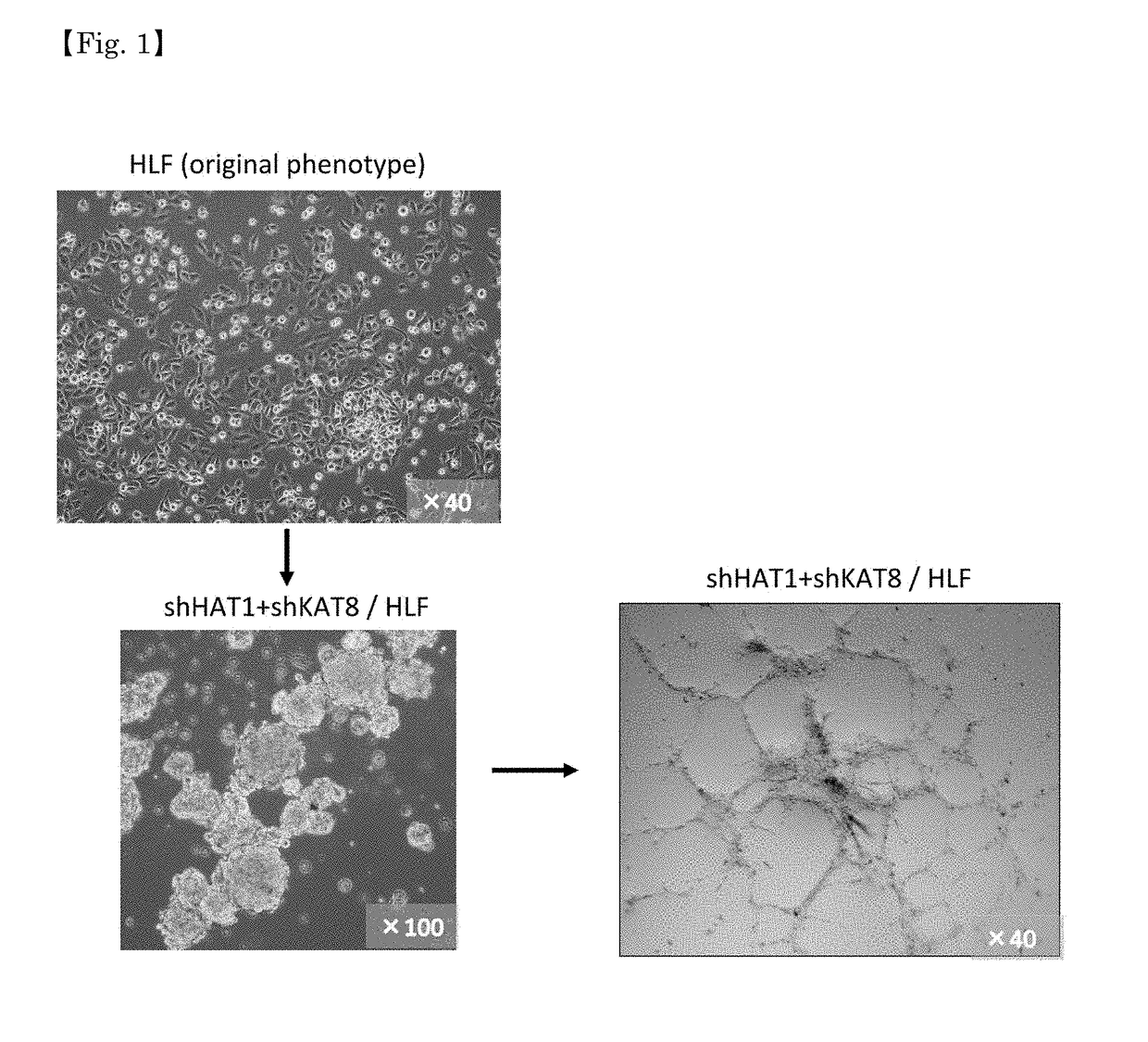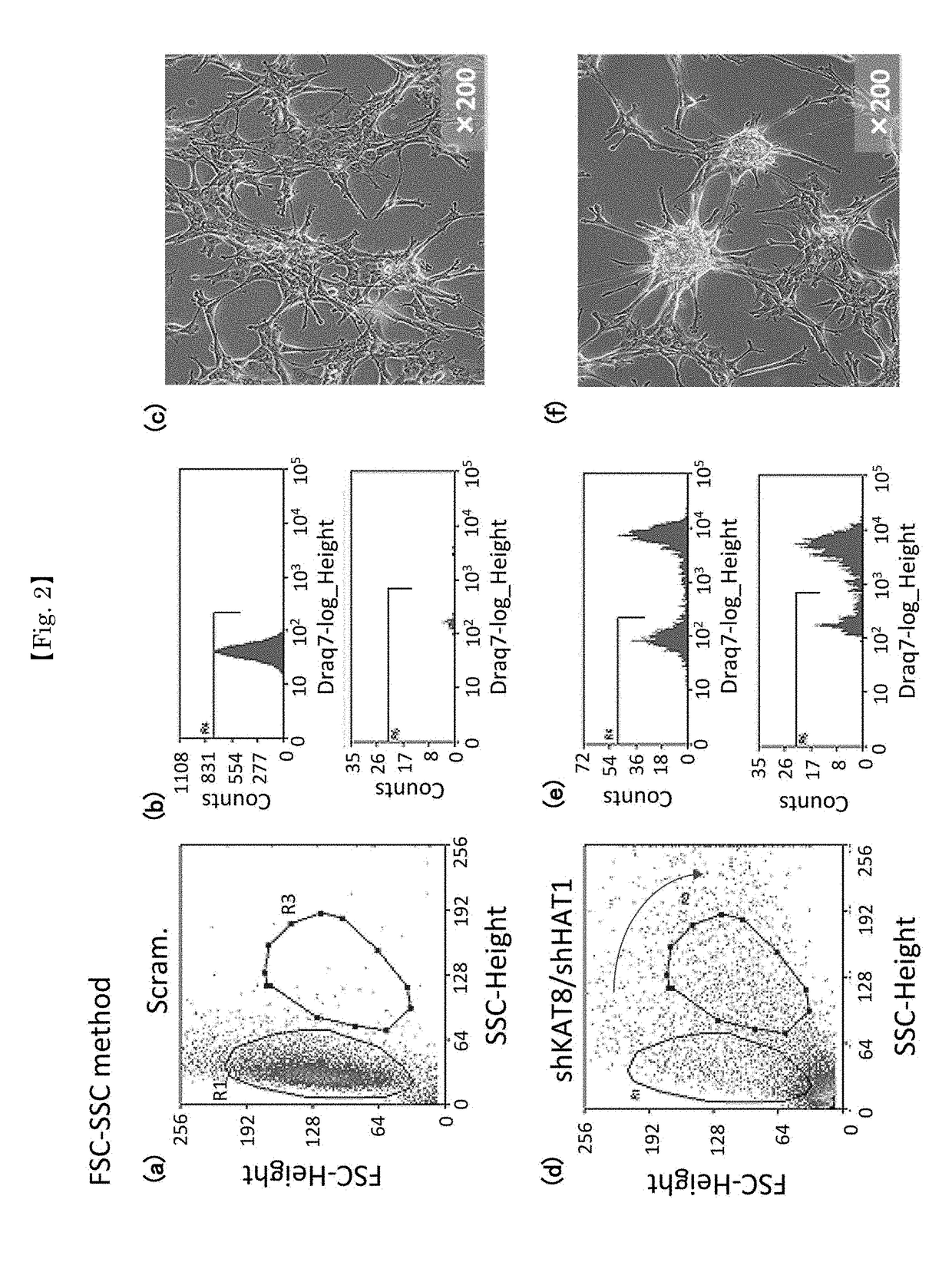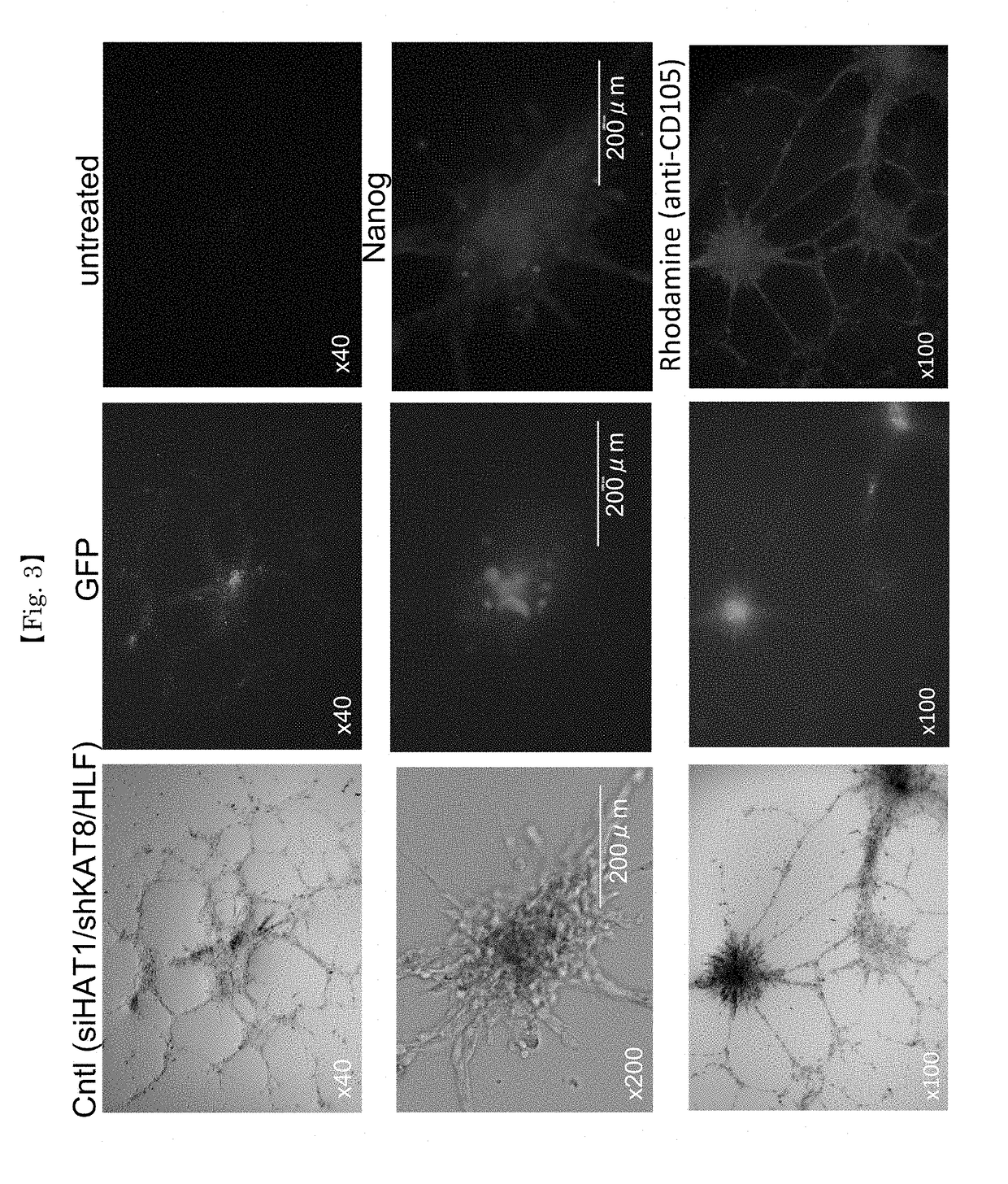Inhibitors for methylation-related enzymes hat1 and kat8
- Summary
- Abstract
- Description
- Claims
- Application Information
AI Technical Summary
Benefits of technology
Problems solved by technology
Method used
Image
Examples
example 1
[0124]1.1. Inhibition by shRNAs Against HAT1 and KAT8
[0125]HLF cells (liver cancer cells) were infected with both HAT1 shRNA-expressing lentivirus particles (psi-LVRU6GP for HAT1 mixture. Genecopoeia, Inc.) and KAT8 shRNA-expressing lentivirus particles (psi-LVRU6GP for KAT8 mixture, Genecopoeia, Inc.) (hereinafter, sometimes referred to as shHAT1 / shKAT8) at MOI=1. Then, the levels of expression of target genes were examined by RT-PCR. The results demonstrated a significant inhibitory effect on the HAT1 and KAT8 genes. FIG. 1 shows the cell morphology of the shHAT1 / shKAT8-containing HLF cells after cultured for 7 days in RPMI1640 medium. The shRNA-containing HLF cells are transformed into cells with a spherical shape (the lower left panel). After additional 7 days of culturing, the morphology of the HLF cells looked like a unique radial network, which was completely different from that of original HLF cells. This demonstrated that the stemness characteristics of HLF cells are induce...
example 2
[0135]2.1. Inhibition by Low-Molecular-Weight Compounds Against HAT1 and KAT8
[0136]Through FDA library screening (analysis service; PLEXERA, Inc., Woodinville, Wash., USA), 12 different low-molecular-weight compounds that inhibited function of both HAT1 and KAT8 were identified. The compound names are chlorpropamide, vancomycin hydrochloride, betaxolol hydrochloride, colistin sulfate, bisoprolol fumarate, pinaverium bromide, oxprenolol hydrochloride, methylbenzethonium chloride, demecarium bromide, celiprolol hydrochloride (HCl), amikacin hydrate, and alprenolol hydrochloride (hereinafter, sometimes referred to as chlorpropamide, etc.). Medicines containing each as an active ingredient (provided that each medicine has an indication other than that for malignant tumors) have already been commercially available. Because of this, these compounds seem safe.
[0137]FIG. 5 shows the CAS registry number and the HAT1- and KAT8-binding strengths of each low-molecular-weight compound. Each low-...
example 3
[0149]3.1. Effect of Recovering from DNA Damage
[0150]First, NHDF cells (human skin fibroblasts) were cultured on 10-cm culture plates. Next, the cells were irradiated with UV light (302 nm), which strongly causes DNA damage, for 17 min (at 0.5 J / cm2). Then, 4-min irradiation was found to be enough for cell death of the NHDF cells.
[0151]Three days after the UV irradiation, both HAT1 shRNA-expressing lentivirus particles (psi-LVRU6GP for HAT1 mixture. Genecopoeia, Inc.) and KAT8 shRNA-expressing lentivirus particles (psi-LVRU6GP for KAT8 mixture, Genecopoeia, Inc.) (hereinafter, sometimes referred to as shHAT1 / shKAT8) were added to the NHDF cells on the culture plates. The additive concentration of the HAT1 shRNA-expressing lentivirus particles was 1 copy / cell and the additive concentration of the KAT8 shRNA-expressing lentivirus particles was 1 copy / cell. All virus-uninfected NHDF cells were still subject to cell death after the UV irradiation.
[0152]After about 2 weeks, it was observ...
PUM
| Property | Measurement | Unit |
|---|---|---|
| Weight | aaaaa | aaaaa |
Abstract
Description
Claims
Application Information
 Login to View More
Login to View More - R&D
- Intellectual Property
- Life Sciences
- Materials
- Tech Scout
- Unparalleled Data Quality
- Higher Quality Content
- 60% Fewer Hallucinations
Browse by: Latest US Patents, China's latest patents, Technical Efficacy Thesaurus, Application Domain, Technology Topic, Popular Technical Reports.
© 2025 PatSnap. All rights reserved.Legal|Privacy policy|Modern Slavery Act Transparency Statement|Sitemap|About US| Contact US: help@patsnap.com



